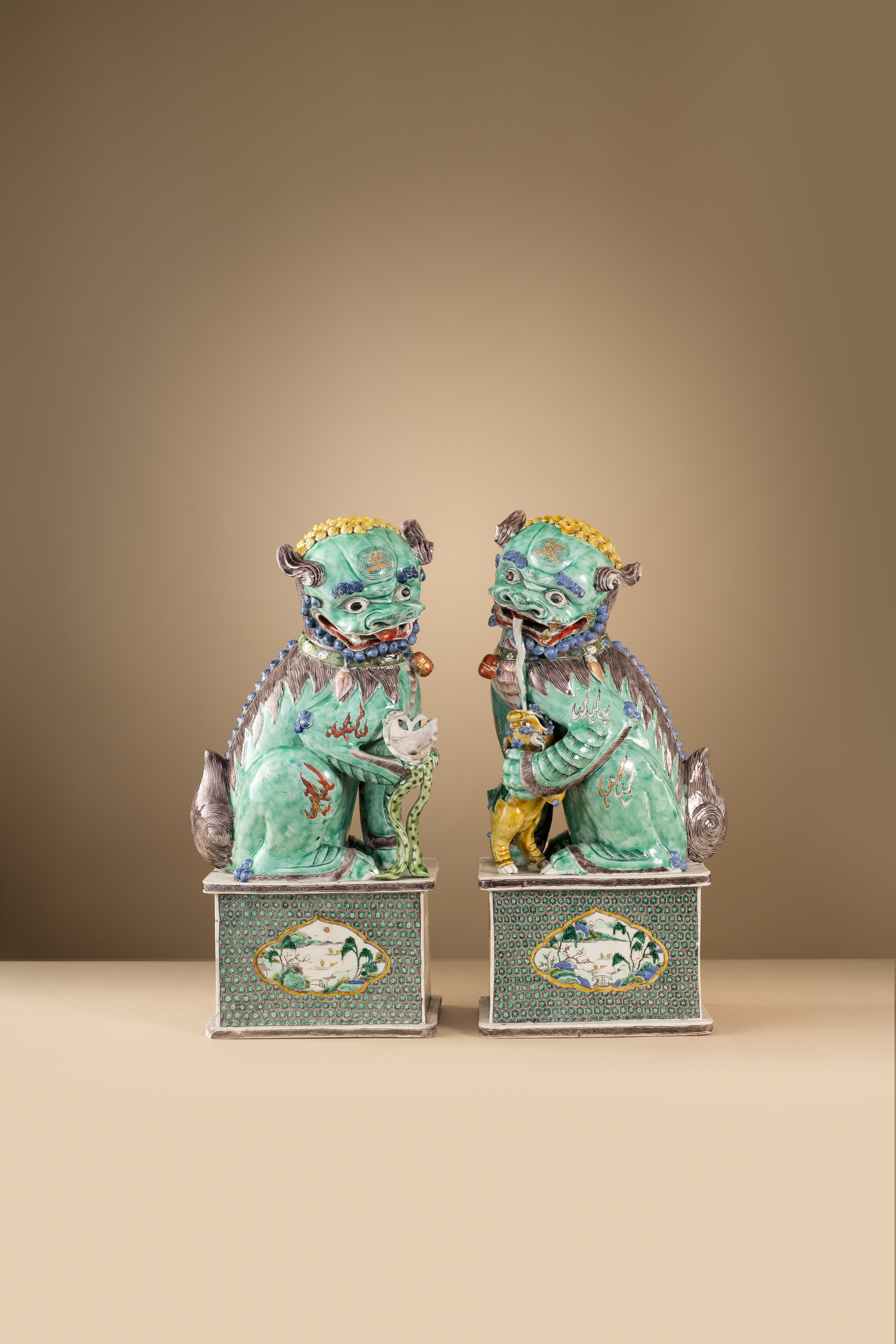Fine Asian Art - 12th November 2024
Lot 6
A MASSIVE PAIR OF CHINESE FAMILLE VERTE MODELS OF BUDDHIST LIONS
Estimate £15,000 - £25,000 | Hammer £12600
Inc. Buyers Premium
Description

A MASSIVE PAIR OF CHINESE FAMILLE VERTE MODELS OF BUDDHIST LIONS
KANGXI 1662-1722
Each lion modelled with its head turned to the side, the faces with bulging eyes and wide grinning expressions revealing red-enamelled tongues, the foreheads decorated with the character wang, each body glazed in green with yellow-enamelled curls and aubergine-enamelled manes and tails, the female protectively grasps at her clambering pup below, both seated on rectangular-section plinths painted with panels of watery landscapes reserved against diaper grounds, 46.2cm max. (2)
Provenance: from the collection of the 9th Marquis of Waterford, Henry Nicholas de la Poer (b.1958) of Curraghmore, County Waterford.
Cf. RL Hobson, Catalogue of the Leonard Gow Collection of Chinese Porcelain, vol.1, plate LXIII for a related pair of Buddhist lions.
Since at least the 3rd century AD, pairs of lions made of stone or bronze have flanked entrances to palaces and temples to ward off evil spirits. In the Forbidden City, Beijing, there are seven pairs of guardian lions still standing today, including a bronze pair at the Gate of Supreme Harmony (Taihe dian). The male lion usually has his paw resting on a brocade ball to symbolise power, while the female has a playful cub under her paw to represent prosperity. Ceramic lions are often inscribed with the Chinese character wang (king) on their foreheads as a sign of their strength, as seen on the present lot. During the Kangxi period, the popularity of Buddhist lion figures reached its zenith both domestically and, perhaps even more so, in Europe, where they were sometimes referred to as ‘Fo (Buddhist) dogs’. Fine pairs of Buddhist lions, such as those offered here, can be found in important museums and private collections worldwide. For two closely related pairs see the Staatliche Kunstsammlungen Dresden, accession nos. PO 3634 and PO 3635, and PO 8955 and PO 8956, the former pair illustrated in Eva Ströber, La maladie de porcelaine: East Asian Porcelain from the Collection of Augustus the Strong, pl.23. Refer also to the The Royal Household Collection of Drottningholm Palace, Sweden for two further similar pairs of Buddhist lion figures, included in Jan Wirgin, K'ang-Hsi Porcelain, Selected Objects from Swedish Collections, pl.46-7, one of which was collected by Queen Hedvig Eleonora (1636-1715).
清康熙 五彩瑞獅 一對
來源:愛爾蘭沃特福德克拉莫爾第九代沃特福德侯爵Henry Nicholas de la Poer (1958年生) 的收藏。